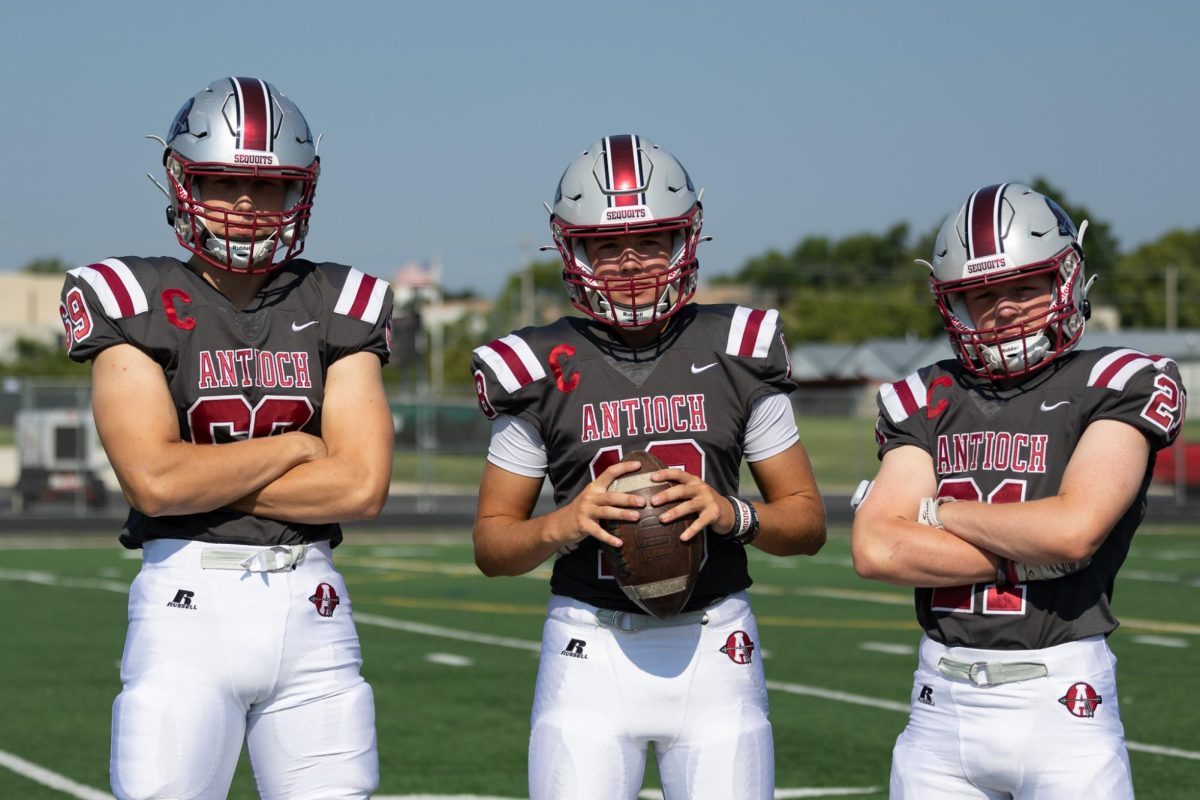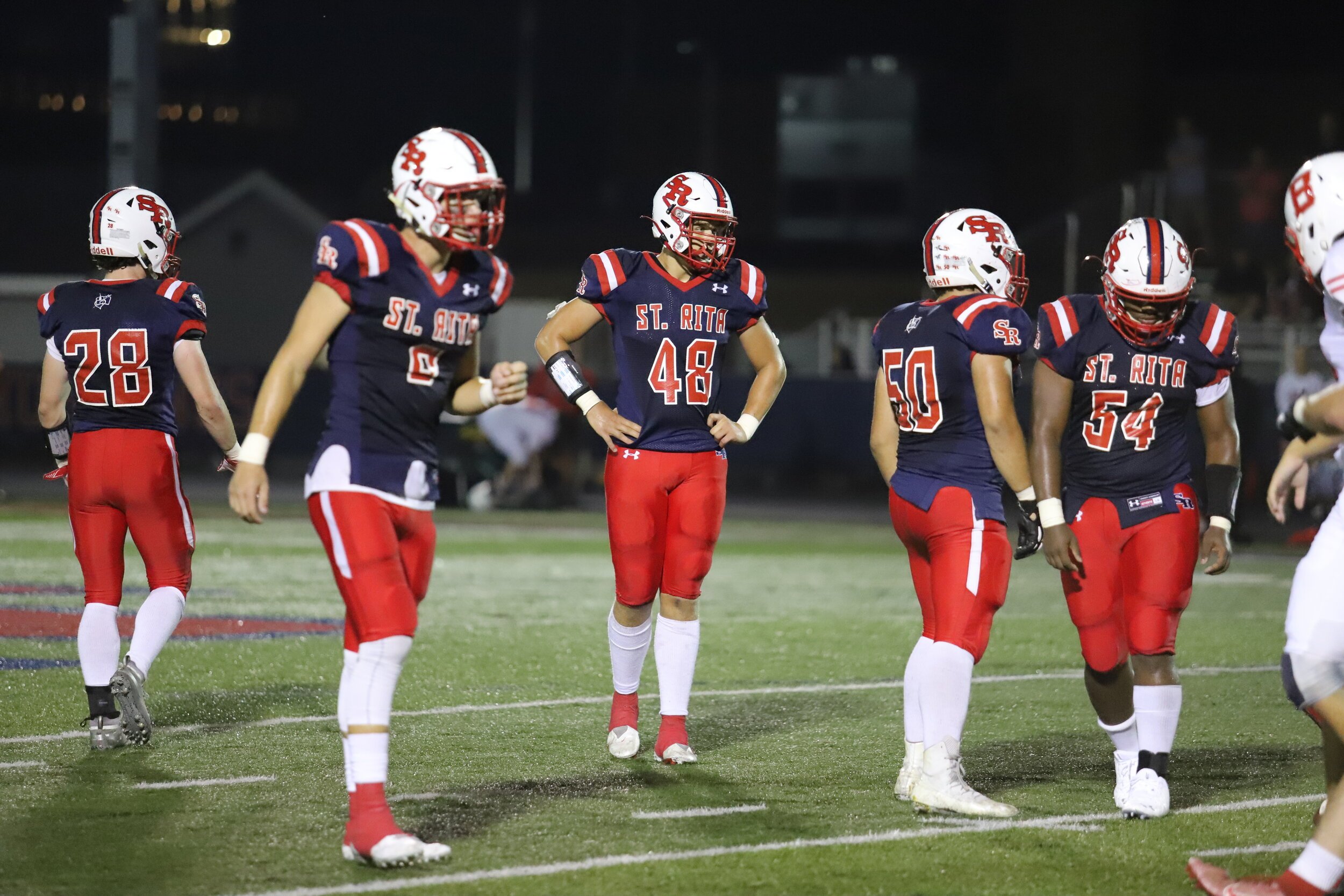Split in Motion: How the IHSA playoffs would look with a split.
Copyright The State Journal-Register, 2023
It's one thing to just talk about splitting up public and private postseasons in the IHSA.
It's another thing to see what it actually could look like, especially in football. With the rise of 8-man, the advantaged dominance of private schools, and the slow decline of small public schools in 11-man football, now is as good a time as ever to re-evaluate the way the IHSA football postseason is held.
8-Man Rising
In 2023, the Illinois 8-Man Football Association (I8FA) consisted of 28 schools competing for 16 playoff spots in a single class. The number of schools is set to grow next year, with at least one team (West Carroll in Savanna) announcing its move to 8-man.
Copyright Shaw Local, 2023
8-man football has become a popular option for schools with small enrollments who want to keep playing football but don't have the manpower to continue fielding 11-man teams. It's been a savior for historically strong programs such as Milledgeville, Amboy, and Polo.
A switch to the octet formation could benefit schools such as Walther Christian and Westmont, who forfeited some games mid-season due to low numbers, or such as Vienna and Sparta, who forfeited their whole seasons before they began for the same reason. None of these schools have yet decided to make the change, but it would not come as a surprise if they did.
With only 6 of the 28 teams being private schools, there would not be enough to split the 8-man playoffs. This, however, would be possible in the 11-man field, with some adjusting to the classifications...
Keep 8 classes, but entice the traditionalists
As pointed out by the Antioch Sequoits football X (Twitter) account, there are 520 public schools and 49 private schools playing 11-man football. Not all of these 569 teams are eligible for the playoffs because the Chicago Public League does not allow teams in its Blue Divisions to qualify.
Copyright Sequoit Media, 2023
There were 498 playoff-eligible teams in 2023. Let's assume that's 449 public and 49 private schools.
My solution to the advantage that private schools have is to split the classes. What does that look like?
Right now, the top 256 teams enter the 8 classes, first separated by enrollment, then re-seeded based on record and, in the smaller classes, geography.
Some traditional fans still gripe that there are too many classifications. There were only five classifications until 1979 when the IHSA bumped that up to six. It stood that way until 2000 when the 8-class system was employed.
I suggest keeping eight classes: two private school classes (1P and 2P) of 16 teams, and six public school classes (1A-6A) of 32 teams. This would drop the total number of playoff teams from 256 to 224. This mimics the percentage of schools that would have qualified just a few years ago before we saw the reduction of playoff-eligible teams.
The state championships for these projected 8 classes could still be played four a day, with 1P and 1A-3A on Friday, and with 2P and 4A-6A on Saturday.
Private Postseason
Just like it's not fair for LeRoy to have to play Althoff Catholic from Belleville, it's not fair for Althoff Catholic to have to play St. Rita from Chicago, based both on student enrollment and total population in their 30-mile radius.
Copyright St. Rita High School, 2023
If 32 of 49 eligible private schools were to qualify for the playoffs, splitting into two classes would make sense. 30 schools qualified this year, so the next two eligible qualifiers (Marist and Marian Central Catholic) have been added.
Ignoring a potential geographical north-south division in 1P, here's what they could look like, 2P being the larger schools and 1P being the smaller schools:
2P is almost entirely CCL/ESCC teams, with only Boylan Catholic, Wheaton Academy, and Sacred Heart-Griffin not coming from the super-conference. The smallest school in this classification is Wheaton Academy (4A Qualifier) with an enrollment of 669, the largest being Loyola (8A) at 3,276.
The 1P Projection is pretty intriguing to me, since it boasts a wide range of private schools across the state. Just two schools come from the CCL/ESCC, with four from the Chicagoland Christian Conference. The largest school in this is Normal U-High (4A) at 608 students, the smallest is Marquette Academy (1A) at 154.
Note: Success multipliers were not removed before creating these brackets.
Public Postseason
With two schools being added to the private landscape and 32 total teams being taken out of the entire field, 34 public schools that qualified in 2023 would not qualify in this layout. While not ideal, it once again matches the percentage of qualifying teams from a few years ago, with only a few 5-4 teams making it, while all 6-3 teams still clinch a spot. Once again, these brackets ignore a potential geographic north-south division in the smaller classes.
6A is made up of schools from this year's 7A and 8A brackets, the smallest being Jacobs (2029) and the largest being Stevenson (4313).
5A consists of schools from this year's 6A and 7A brackets, the smallest being Senn (1533) and the largest being Hersey (1989).
4A consists of schools from this year's 5A and 6A brackets, the smallest being Mahomet-Seymour (996) and the largest being Cary-Grove (1519).
3A consists of schools from this year's 3A, 4A, and 5A brackets, the smallest being Tolono Unity (516) and the largest being Noble/UIC (957).
2A consists of schools from this year's 2A and 3A brackets, the smallest being Farmington (351) and the largest being Monmouth-Roseville (515).
1A consists of schools from this year's 1A and 2A brackets, the smallest being Villa Grove (190) and the largest being Shelbyville (349).












Comments
Post a Comment